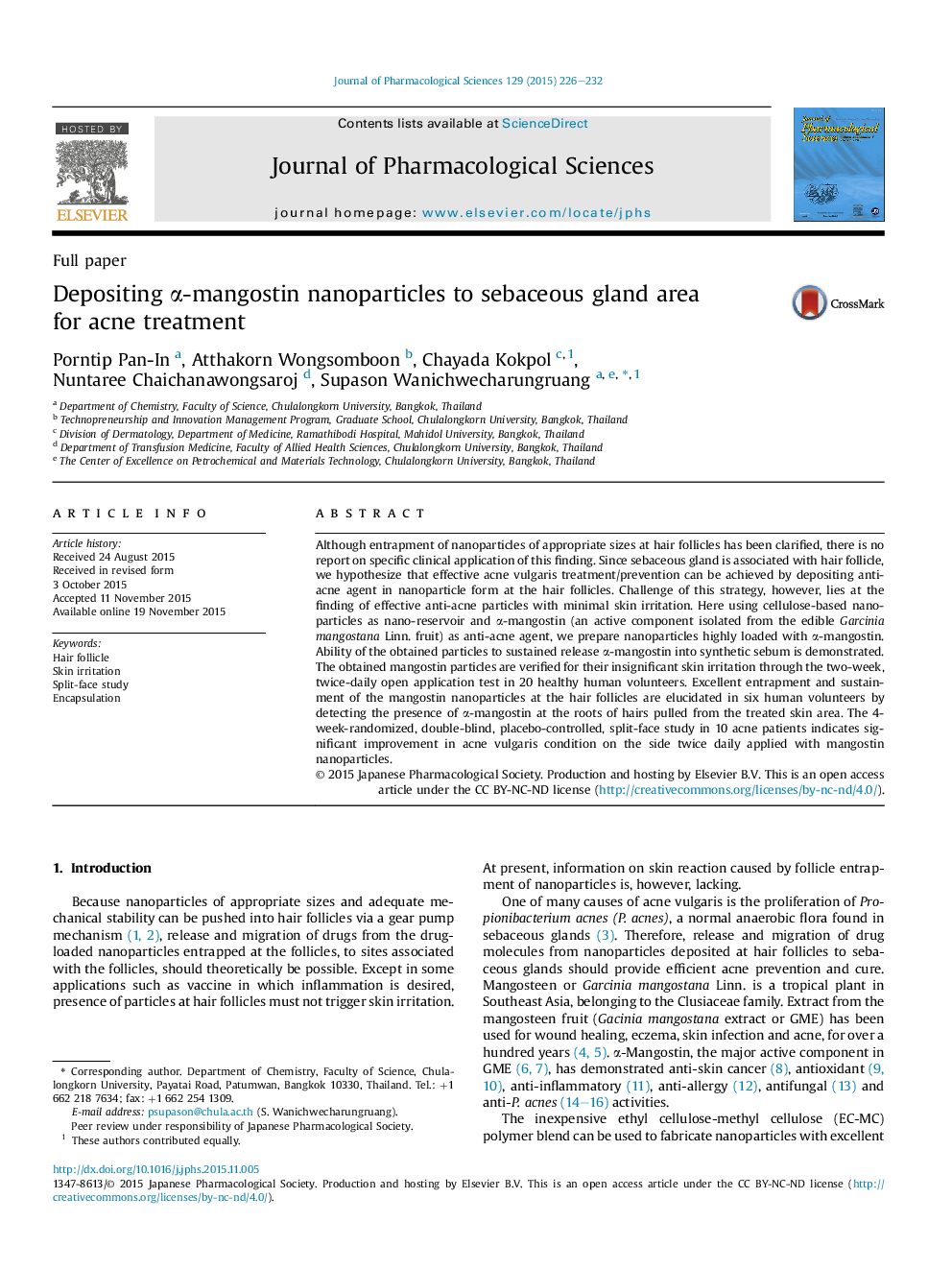| Article ID | Journal | Published Year | Pages | File Type |
|---|---|---|---|---|
| 2548855 | Journal of Pharmacological Sciences | 2015 | 7 Pages |
Although entrapment of nanoparticles of appropriate sizes at hair follicles has been clarified, there is no report on specific clinical application of this finding. Since sebaceous gland is associated with hair follicle, we hypothesize that effective acne vulgaris treatment/prevention can be achieved by depositing anti-acne agent in nanoparticle form at the hair follicles. Challenge of this strategy, however, lies at the finding of effective anti-acne particles with minimal skin irritation. Here using cellulose-based nanoparticles as nano-reservoir and α-mangostin (an active component isolated from the edible Garcinia mangostana Linn. fruit) as anti-acne agent, we prepare nanoparticles highly loaded with α-mangostin. Ability of the obtained particles to sustained release α-mangostin into synthetic sebum is demonstrated. The obtained mangostin particles are verified for their insignificant skin irritation through the two-week, twice-daily open application test in 20 healthy human volunteers. Excellent entrapment and sustainment of the mangostin nanoparticles at the hair follicles are elucidated in six human volunteers by detecting the presence of α-mangostin at the roots of hairs pulled from the treated skin area. The 4-week-randomized, double-blind, placebo-controlled, split-face study in 10 acne patients indicates significant improvement in acne vulgaris condition on the side twice daily applied with mangostin nanoparticles.
